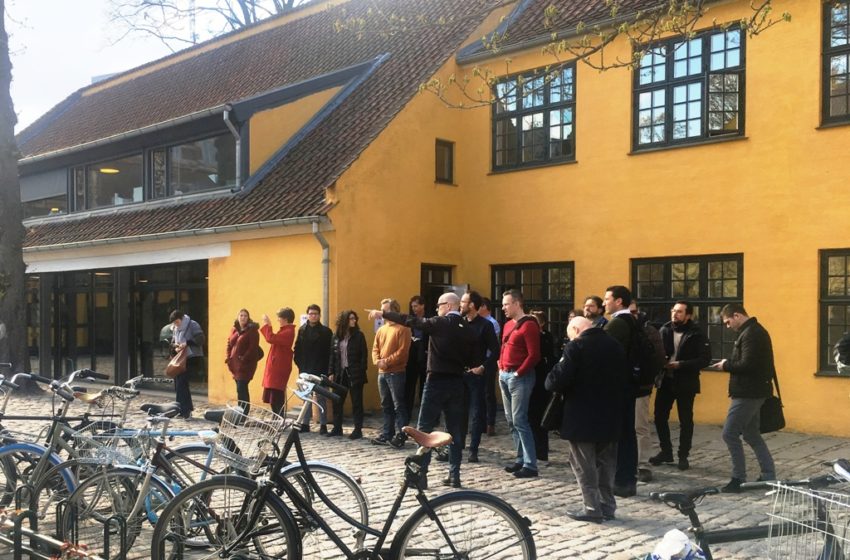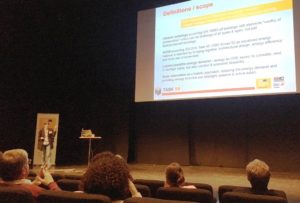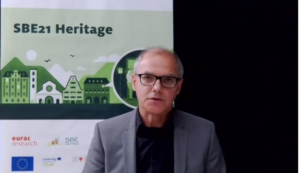Reducing energy consumption in historic buildings
July 17, 2019
A meeting in mid-April, Copenhagen, Denmark, gave members of IEA SHC research platform Renovating Historic Buildings Towards Zero Energy (Task 59) the opportunity to meet researchers working on the EU Horizon 2020 project Robust Internal Thermal Insulation of Historic Buildings, or RIBuild, and prompted a fruitful exchange between experts in historic building refurbishment. Open to local stakeholders, the event took place in a heritage building known as Fortress’s Material Depot (see photo), the renovation of which had lowered CO2 emissions by 20 %.
Photo: IEA SHC Task 59
“The aim of this event was to present our findings to a new audience and to get feedback on the issues we are working on within the task,” said Daniel Herrera, Co-Coordinator of the IEA SHC research platform, who works at Italian-based Eurac Research. RIBuild is developing guidelines on how to install thermal insulation inside historic buildings while keeping their architectural and cultural heritage intact.
Guidelines on internal insulation
Today, historic buildings make up 30 % of the European building stock and account for more than a third of the total energy consumption in the residential sector across the EU. According to RIBuild, the potential for saving energy in historic buildings is between 15 % and 20 %. However, installing internal insulation can be a difficult task, as it is error-prone and costly. Building owners and practitioners require reliable information and clear guidelines on how to install thermal insulation in historic buildings in a safe and effective manner, and to accomplish this, RIBuild has been using case studies that include data from on-site tests, simulations and laboratory analyses of materials.

Meeting of experts working on IEA SHC Task 59 and RIBuild for discussing strategies to reduce energy consumption in historic buildings
Source: IEA SHC Task 59
Innovation versus experience
The IEA SHC experts used the workshop to ask important questions, such as “Will the Task 59 best-practice database on showcase projects help persuade building owners?”, “How do architects usually look for information on renovation?” or “Innovation vs experience: Where do you see the benefits?”
They also used the opportunity to ask attendees for best-practice examples of historic building retrofits and case studies suited to implementing and testing standard EN 16883, as well as for sustainable retrofit ideas that help maintain the character of a building.
“The most interesting discussion was about the balance between innovation and experience,” said Herrera. Some local participants mentioned the lack of pilot projects to test innovative materials and show them to the public. Long ago, these sorts of projects were conducted in Denmark and were considered to have been very successful. Attendees underlined that practitioners need reliable scientific evidence before they could be persuaded to choose a certain innovative material or solution.
Lastly, participants in the meeting also highlighted the importance of maintenance to avoid damage to the building after renovation. “A member of a local institution, who has had multiple dealings with insurance companies, explained how they are currently following that approach, and nowadays their budget is split about evenly between investing in maintenance and quality control and the cost of repairs.”
Organisations mentioned in this article:
IEA SHC Task 59: http://task59.iea-shc.org/
RIBuild project: https://www.ribuild.eu/


